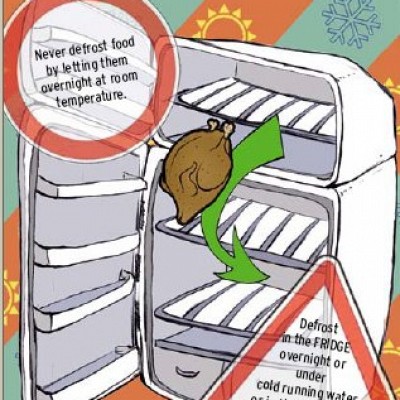The food processing industry works hard to stave off biological, chemical, and physical hazards. Learn how processing plants catch them to keep you safe.
It would be wonderful if we could grow all our own fruits, vegetables, and grains, and live off only what we can produce ourselves. Not only is this unrealistic in modern times, but it would also be extremely limiting to our diets. We trust food processing plants to handle most of the hard work of getting food ready for market and table, and we can trust them because of exacting government and industry standards for food safety. These standards help to minimize common food processing safety hazards. While these hazards exist, know that processing plants work their hardest to avoid them.
Biological Hazards
Food processing hazards generally fall into one of three categories: biological, chemical, and physical. Biological hazards, the contamination of food products by viruses, bacteria, or other microorganisms are the ones we most commonly think of when food producers issue recalls. These occur when pathogens unexpectedly survive processes meant to kill them, such as pasteurization or freezing. Sometimes, contamination occurs through air or water in the facility. In some cases, it is simply a matter of hygienic issues among the workforce. Biological hazards are damaging to the public trust, and make the news when they occur, but plants still go to great lengths to keep them low through high sanitary standards.
Chemical Hazards
Chemical hazards to food occur when chemicals involved in food processing, from pesticides to industrial chemicals such as refrigerants or cleaning agents, are either insufficiently removed from the products or wrongly introduced to them in the first place. Allergens are also classified as chemical hazards. Unlike metals that are classified as physical hazards, lead-related contamination is also considered a chemical hazard. Though less common than biological hazards, chemical hazards can be just as harmful to consumers and to a food processor's reputation.
Physical Hazards
As a series of machines handles food, parts of those machines can break. This is how foreign objects such as glass, metal, rock, and plastic can inadvertently make their way into processes. These represent physical hazards to food, and processing plants have become adept at removing these hazards. Advanced lighting systems help workers identify pieces of glass. Many plants use electromagnetic separators to locate and remove metal-based contaminants and foreign objects from food; by sending food through a powerful magnetic field, items that have traces of iron are diverted from further processing, keeping consumers safe from harmful bits of metal.
These common food processing safety hazards are unpleasant to think about. Consideration of all the ways that food processing plants can fail us and our safety is a heavy topic. But knowing the ways that plants work to address these hazards, including extensive physical sorting, should help you feel better about the safety of our food.






































